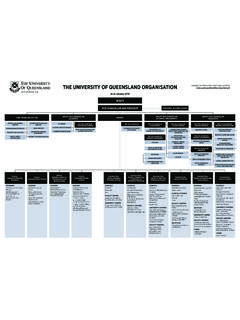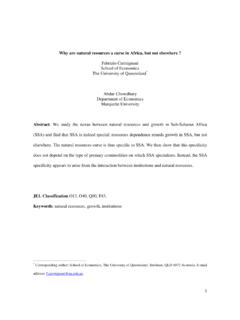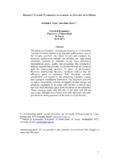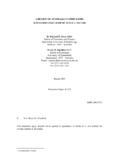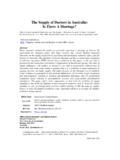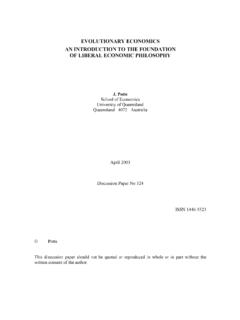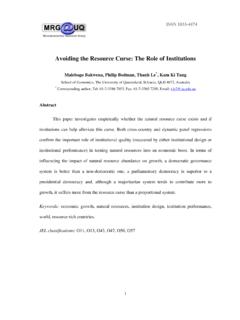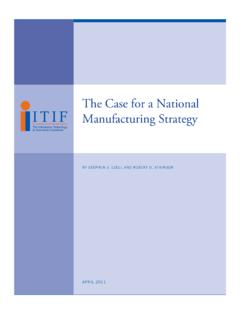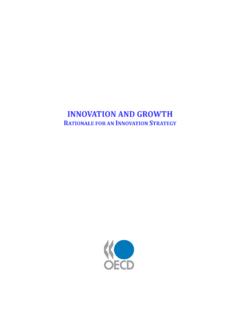Transcription of Systems thinking, market failure, and the …
1 1 UQ Economics Discussion Paper No. 403: Department of Economics, University of Queensland. And Centre for Business Research Working Paper 397, University of Cambridge. Systems thinking, market failure, and the development of innovation policy: The case of Australia. Mark Dodgson1 Alan Hughes2 John Foster3 Metcalfe4 1. Technology and innovation Management Centre, University of Queensland Business School; University of Queensland, Brisbane, Australia Corresponding author. 2. Centre for Business Research and UK innovation Research Centre, Judge Business School; University of Cambridge; Cambridge , UK 3. Department of Economics, University of Queensland, Brisbane, Australia 4. University of Manchester, Manchester, UK January, 2010 2 Abstract innovation policy is increasingly informed from the perspective of a national innovation system (NIS), but, despite the fact that research findings emphasize the importance of national differences in the framing conditions for innovation , policy prescriptions tend to be uniform.
2 Justifications for innovation policy by organizations such as the OECD generally relate to notions of market failure, and the USA, with its focus on the commercialization of public sector research and entrepreneurship, is commonly portrayed as the best model for international emulation. In this paper we develop a broad framework for NIS analysis, involving free market , coordination and complex evolutionary system approaches. We argue that empirical evidence supporting the hypothesis that the free market can be relied upon to promote innovation is limited, even in the USA, and the global financial crisis provides us with new opportunities to consider alternatives. The case of Australia is particularly interesting: a successful economy, but one that faces continuing productivity and innovation challenges.
3 Drawing on information and analysis collected for a major review of Australia s NIS, and the government s 10 year plan in response to it, we show how the free market trajectory of policy making of past decades is being extended, complemented and refocused by new approaches to coordination and complex evolutionary system thinking. These approaches are shown to emphasize the importance of systemic connectivity, evolving institutions and organizational capabilities. Nonetheless, despite the fact that there has been much progress in this direction in the Australian debate, the predominant logic behind policy choices still remains one of addressing market failure, and the primary focus of policy attention continues to be science and research rather than demand led approaches.
4 We discuss how the development and elaboration of notions of Systems failure, rather than just market failure, can further improve policy making in the future. Key words: innovation policy, national innovation Systems , market failure, Systems thinking, complex evolutionary perspectives, Australia. 3 1. Introduction One of the most striking features of innovation policy discussions in national governments and international policy organizations has been the adoption of the terminology of Systems thinking and in particular the language of national innovation Systems (NIS). Recent examples include innovation policy reviews in the UK and Australia (DTI, 2003; HM Treasury et al 2007; Venturous Australia, 2008) and the publication by the OECD of a series of country specific innovation policy reports which explicitly adopt an NIS framework (see, for example, OECD, 2005).
5 This apparent capture of the innovation policy agenda by NIS thinking might be considered surprising in view of the criticisms to which it has been subjected at the same time as it became respectable in policy circles. Questions have been raised, for example, about the contemporary relevance of national , rather than global, regional, sectoral and technological influences on innovation performance. There is a tendency to confuse innovation Systems with invention Systems and the latter with the generation of fundamental science. Critical views have also been expressed about the theoretical status of the NIS approach and the extent of its explanatory powers (see Sharif, 2006), and the methods used to assess how innovation Systems work and their performance ( Edquist 2005).
6 There is also a tension in the NIS literature between studies that explore national differences and those that attempt to develop unified comparative indicators (Balzat and Hanusch, 2004). Moreover it has been argued that the policy debate focuses too much on the identification and pursuit of chimerical optimal innovation Systems when the underlying conceptual and empirical analyses reveal great variety and persistent differences in system characteristics (Edquist et al 2008:3). The problems with the NIS approach have not prevented it from influencing policy thinking through its capacity to produce a shared framework of analysis, by spanning academic and policy boundaries and providing a versatile tool for decision making (Sharif, 2006).
7 Comparative indicators and methodologies continue to be developed to study innovation Systems (see Gault, 2007 and more generally OECD, 2005). Even so difficulties remain with a reliance on highly piecemeal and often misleading 4 indicators of performance, such as US patenting, found in some analyses (see the observations of Smith, 2005; Freeman and Soete, 2009). A more fundamental critique is based on the view that applications of the NIS approach are often too static, descriptive and mechanical, and focus disproportionately on science and technology as opposed to other loci of innovation . Instead, it is argued that what is required is an approach that emphasizes the dynamic, emergent, and evolving nature of Systems and the multiple and distributed sources of knowledge for innovation (Lundvall, 2007).
8 Evidence collected on innovation Systems leads readily to the view that we are dealing with a complex, evolving system and that successful economies are those which have robust, but adaptable, network connections that enable organizations to translate new knowledge into viable innovations and enhanced productive capacity (see, for example, Malerba, 2004; Edquist, 2005; Edquist and McKelvey, 2000; McKelvey and Holmen, 2006). The reduction of the NIS to an application of static economic theory, as pointed out by Lundvall (2007), leads to policy prescriptions based primarily on limited and constrained notions of market failure, which do not capture the dynamic complexity of the systemic combinations that emerge to address innovation problems in particular national contexts.
9 The OECD, for example, while noting the variation in system characteristics across countries still continues to emphasize conventional market failure justifications focused on R&D and related human capital and science base inputs for policy intervention despite attempts to incorporate wider institutional and socio legal issues in conceptual discussions ( see Jaumotte and Pain, 2005 and Box, 2009). When it comes to justifying public intervention through innovation policy, acknowledgements of systemic and evolutionary considerations are mentioned but explicit policy conclusions are far less well developed than familiar market failure arguments. Arguments for intervention focus on setting broad market framework conditions and assessing market failures as a rationale for policy.
10 Systemic failures are mentioned but policy prescriptions are less clear (see Box, 2009). Edquist and Hommen s (2008:479) observation is apposite. 5 policymakers have proclaimed the adoption of the SI approach as a framework and guide for designing future innovation policy. What this means, however, for the design and implementation of innovation policy is certainly not clear and policymakers often do not even know themselves. In these circumstances the return to the safe haven of market failure justifications for policy intervention may reflect the fact that many professional economists working in this domain are trained in neo classical economics rather than Systems approaches to policy design.
